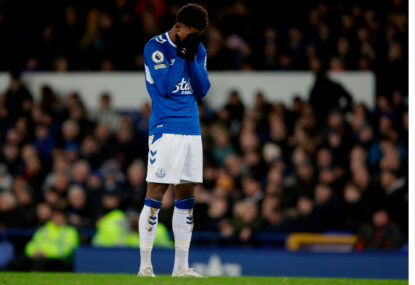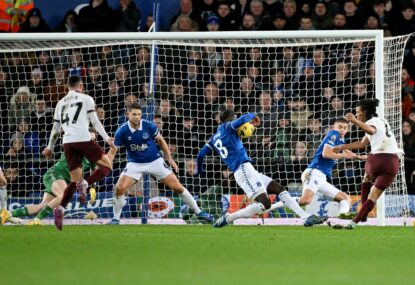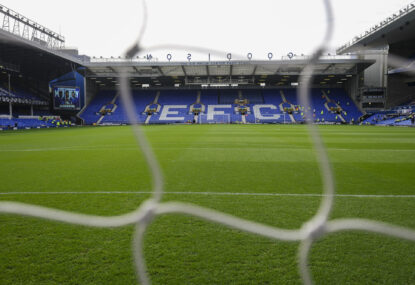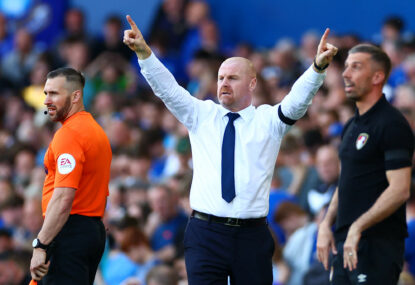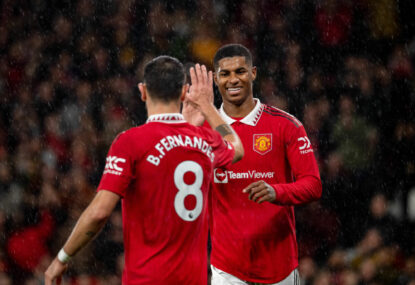Everton, by the skin of their teeth, were able to avoid relegation this season.
They didn’t make it easy on themselves, going as deep into a relegation dogfight as any team has, without taking it to the final day of the season.
A 3-2 victory over Patrick Vieira’s exciting Crystal Palace side meant that the Frank Lampard-led Toffees kept their record of being one of the few teams – along with Manchester United, Arsenal, Tottenham, Liverpool and Chelsea – to have never been relegated from the Premier League.
However, despite the flare-filled jubilation at the end of the Palace game, which resulted in some disgusting fan behaviour towards Vieira during the pitch invasion, there is not much to celebrate for Everton.
A decade of consistent top-half Premier League finishes, which included the development of some of the Premier League’s best players and hottest talents, finally came to an end with the Scouse club picking up just 39 points this season, one short of the infamous 40-point mark and the club’s equal worst Premier League performance.
So, where do they go from here?
Manager
Say what you want about his managerial career to date, but Frank Lampard has performed admirably with Everton this season.
Handed the keys to a plummeting plane with no wings, Lampard managed to stabilise Everton’s free fall out of the top division and ultimately rescue the club from relegation’s clutches.
In the 14 games prior to Frank Lampard’s appointment on January 31, 2022, Everton had won just once, drawn thrice and lost the remaining matches.
It took Frank Lampard two games to win his first match – 3-0 against Leeds United – and from that point on he won a further five matches, drew two more and lost ten from his 18 matches in charge.

(Photo by Clive Brunskill/Getty Images)
By comparison, in Rafa Benitez’s 20 matches in charge, the Spaniard managed five wins, including four in the club’s first six games of the season.
In a shorter period, Frank Lampard was able to turn the fortunes of the Everton Football Club around, and he remains contracted for another two seasons, meaning that Everton have no choice but to back him.
But even so, that is the correct choice.
For a club like Everton, where the expectation is a slow build back towards competing for European positions like West Ham have done, they are investing time and resources in a young manager who has shown promising signs.
As a player he would have seen first hand the type of culture that drove that Everton side of the mid-2000s on to European football and he would be able to use this understanding to build his own culture.
Lampard has shown versatility in his approach to management this season. He took a more pragmatic approach than during his time at Chelsea, when the side averaged 60.7 per cent of possession in his only full season at the club.
This season, Everton have averaged just under 40 per cent of possession, with Lampard instead focusing on keeping the defence tight and winning ugly rather than trying to outplay opposition.
In his 18 matches as Everton boss, Lampard deployed a back three or five in eight matches, winning three and drawing one, highlighting his understanding of adapting his style to suit the players, not vice versa.
With a full pre-season with the side, there is no arguing Frank Lampard has the capabilities to lift Everton further away from the relegation zone next season.
His time at Chelsea – guiding a young, inexperienced, and under-resourced side into fourth place in his first season in charge – showcased his managerial talents.
Personnel
Everton have no doubt had a season riddled by injuries.
It’s tough for most teams outside the league’s biggest spenders to recover from this level of loss, especially in key positions.
But if anything, the injuries have shone a light on the weaknesses with the squad.
Richarlison stepped up in the long absence of talisman Dominic Calvert-Lewin, but had the Brazilian been injured the next man up would’ve been Salomon Rondon.
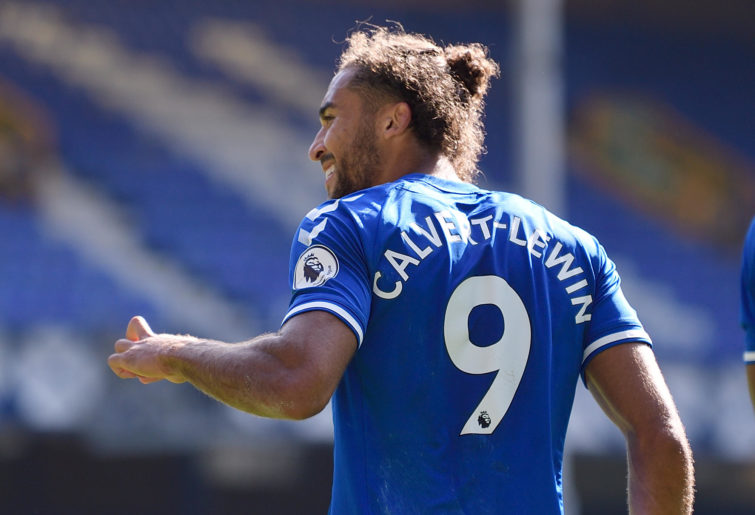
(Photo by Tony McArdle/Everton FC via Getty Images)
Yerry Mina and Ben Godfrey missed extended periods, pushing Mason Holgate and the promising yet inexperienced Jarrad Branthwaite into the starting line-up at times.
Abdoulaye Doucoure, another core component of the Toffees’ spine, missed eight games throughout the year with his two most likely replacements – Tom Davies and Fabian Delph – both missing 24 league matches apiece.
Everton found it quite hard to replace the output of a few of these players.
Richarlison did a fantastic job leading the line for them in absence of Dominic Calvert-Lewin, however his goal-scoring capabilities are nowhere near those of the Englishman, who finished the previous season 16 goals from 33 games.
But outside of Richarlison, many of their replacements simply struggled this season.
A crisis highlights weaknesses. Everton’s season – and injuries – did just that.
That pointed out the complete lack of depth at the disposal of both Benitez and Lampard. This issue is as much down to lack of squad depth as it is to recruitment and player development.
There are certain players within this Everton side who need to be replaced if the club want to once more challenge for a top-ten finish.
And there are also smart signings to be made – not like some of the club’s recent signings, which have been high profile, high transfer fee and high wage players who fail to deliver the club a strong return on investment.
Everton need to head into the market and spend astutely, much like their previous success.
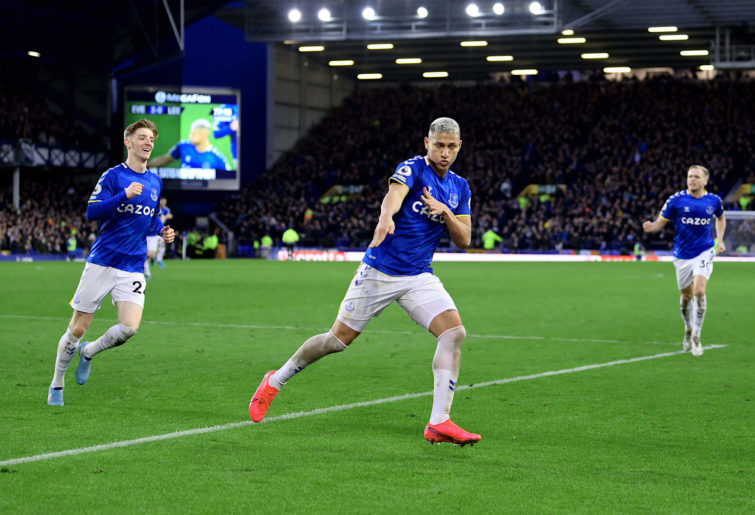
(Photo by Tony McArdle/Everton FC via Getty Images)
They signed players who may not be the biggest names when they walk through the door, like Tim Cahill or Seamus Coleman.
But they buy into the club’s DNA, develop their game at the club and exit the side as a legend.
In 2003-04, Everton were nearly relegated from the Premier League. In 2004-05, albeit led by a young Wayne Rooney, the club qualified for the Champions League.
In the summer wedged between those seasons, they brought in Cahill and Mikel Arteta, players who joined from obscurity and grew to become giants of the club.
A similar attitude to recruitment by modern-day Everton – one that aligns with the needs and desires of the side and of Lampard – is absolutely desperately needed for the club to rebound and improve heading into next year.
Finances
Financially, Everton are a club in ruin. For three consecutive years the club has reported a loss of over £100 million ($176 million).
Frugal spending on players with little reward or return on their investment has characterised the club over the past few years, especially since Farhad Moshiri took majority ownership in 2018.
Long gone are the days when Everton made astute signings for a relatively low fee and sold the player on for exceptional profit years later, such as Romelu Lukaku.
These days Everton’s transfer spending model has been to try and sign as many big-name players as possible from large clubs, like Andre Gomes, and hope that they become world-class, despite no systemic cohesion placed around them.
The 2021-22 season saw Everton spend £8.2 million ($14.4 million) for every Premier League point they accrued, the fourth highest amount in the league. And they spent £1.83 million ($3.2 million) in salary per point, the third highest in the league.
A club fighting relegation has the sixth highest estimated wage bill and the fifth highest purchase value.
That screams financial mismanagement and uncalculated and ruthless spending without any plan in place.
It screams a club spending as much as it possibly can, without any thought of sale on value.
It screams a club that will only stop swiping the credit card when the game’s governing bodies intervene and prevent it.
Of all the changes that need to be made on the blue side of Merseyside, the financial situation of the club is the one that needs be addressed and repaired as soon as possible.
We have often seen clubs spend exorbitant amounts of money on the expectation of profits that never come, such as Leeds in the mid-2000s.
































































































